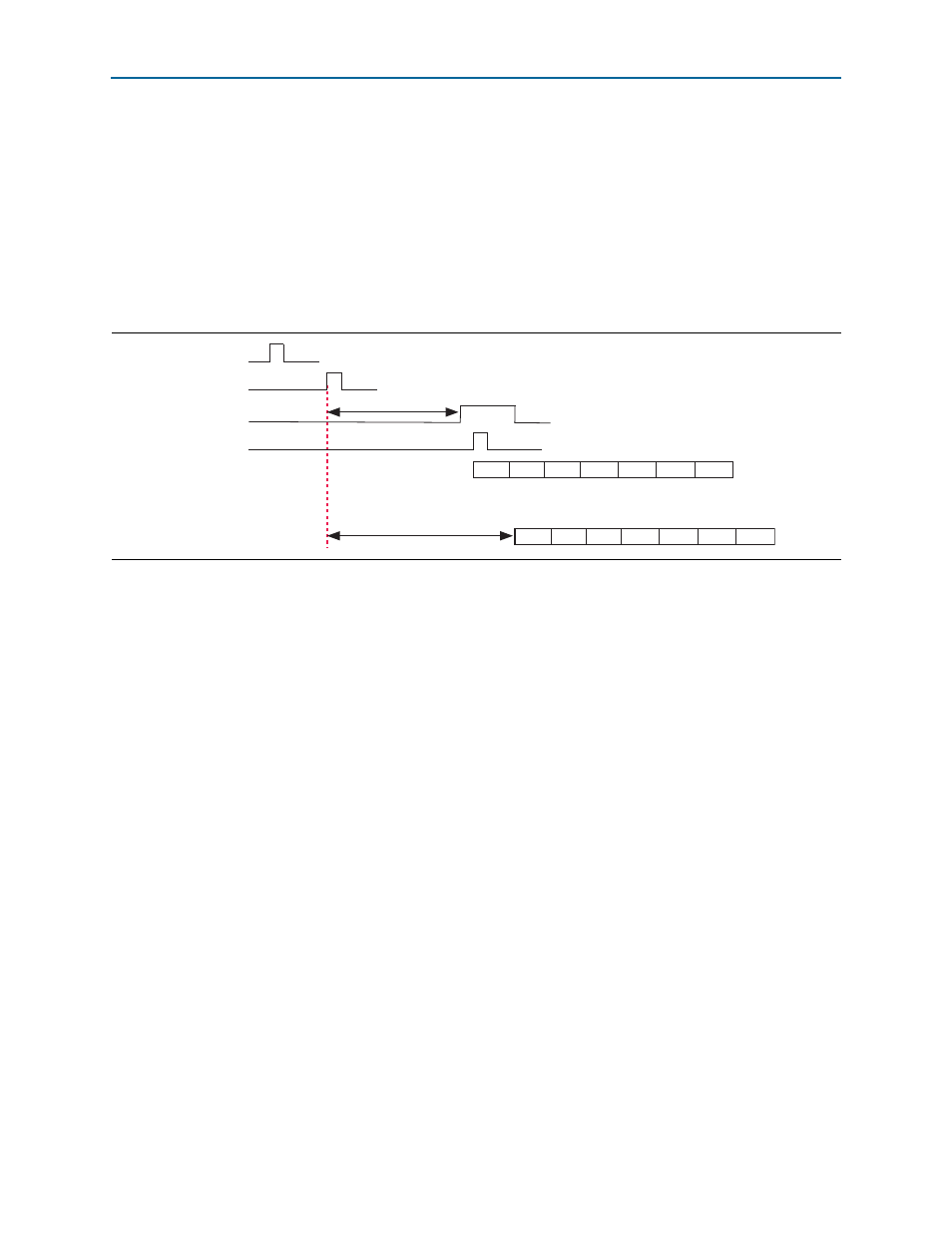Altera CPRI IP Core User Manual
Page 60

4–28
Chapter 4: Functional Description
MAP Interface
CPRI MegaCore Function
December 2013
Altera Corporation
User Guide
Asserting the resynchronization signal ensures correct alignment between the RF
implementation and the CPRI basic frame at the appropriate offset from the start of
the 10 ms radio frame. In addition to ensuring that application-specific constraints are
accommodated, the system can set the
CPRI_START_OFFSET_TX
register to an offset that
precedes the desired frame position in the CPRI transmission, in anticipation of the
delays through the antenna-carrier interface Tx buffer and out to the CPRI Tx frame
buffer. For information about these delays, refer to
.
shows the roles of the
CPRI_START_OFFSET_TX
and
CPRI_MAP_OFFSET_TX
registers in ensuring correct alignment.
The values programmed in the
CPRI_START_OFFSET_TX
register control the assertion of
the
cpri_tx_start
signal by the CPRI transmitter. The values in the
start_tx_offset_z
,
start_tx_offset_x
, and
start_tx_offset_seq
fields specify a
hyperframe number, basic frame number, and word (sequence) number in the basic
frame, respectively, within the 10 ms frame.
The system source of the AxC payload transmits the AxC container block on the data
channel to target a specific location in the 10 ms frame; the system programs the
information for this location in the
CPRI_START_OFFSET_TX
and
CPRI_MAP_OFFSET_TX
registers. The CPRI transmitter learns the location of the AxC container block on the
AxC interface from the
CPRI_START_OFFSET_TX
register. For example, if the
CPRI_START_OFFSET_TX
register is programmed with the value 0x000595FE, the CPRI
transmitter must assert the
cpri_tx_start
signal at word index 5 of basic frame 254 of
hyperframe 149 in the 10ms frame. Altera recommends that the data channel
application sample the
cpri_tx_start
signal, and when it detects the
cpri_tx_start
signal is asserted, assert the
mapN_tx_resync
signal to indicate that the samples on
mapN_tx_data
can begin to fill the data words at the specified position in the CPRI
frame. Assertion of the
mapN_tx_resync
signal resets the write pointer of the current
antenna-carrier interface (mapN) Tx buffer to zero, so that the entire buffer is
available to receive the data from the data channel. The data on
mapN_tx_data[31:0]
can safely be loaded in the mapN Tx buffer in the same cycle that the
mapN_tx_resync
signal is asserted.
Figure 4–15. User-Controlled Delays in Accepting Data From the AxC Data Channels in Synchronous Buffer Mode
cpri_tx_start
cpri_tx_rfp
cpri_tx_sync_rfp
mapN_tx_resync
CPRI_START_OFFSET_TX
CPRI_MAP_OFFSET_TX
sample 0 sample 1 sample 2 sample 3 sample 4 sample 5 sample 6
sample 0 sample 1 sample 2 sample 3 sample 4 sample 5 sample 6
Write to mapN Tx buffer in the first write cycle after the resync signal:
Read from mapN Tx buffer according to CPRI_MAP_OFFSET_TX value:
